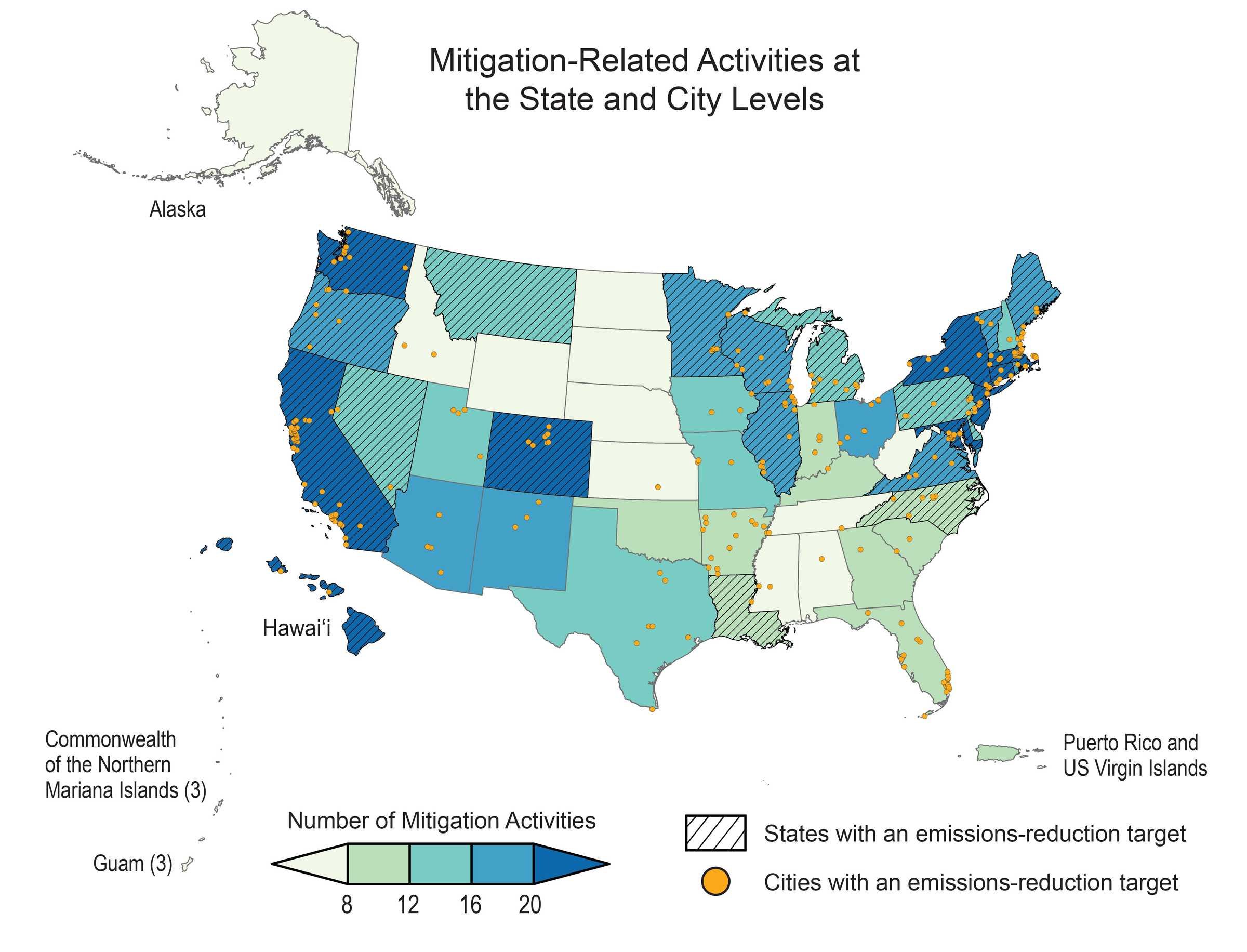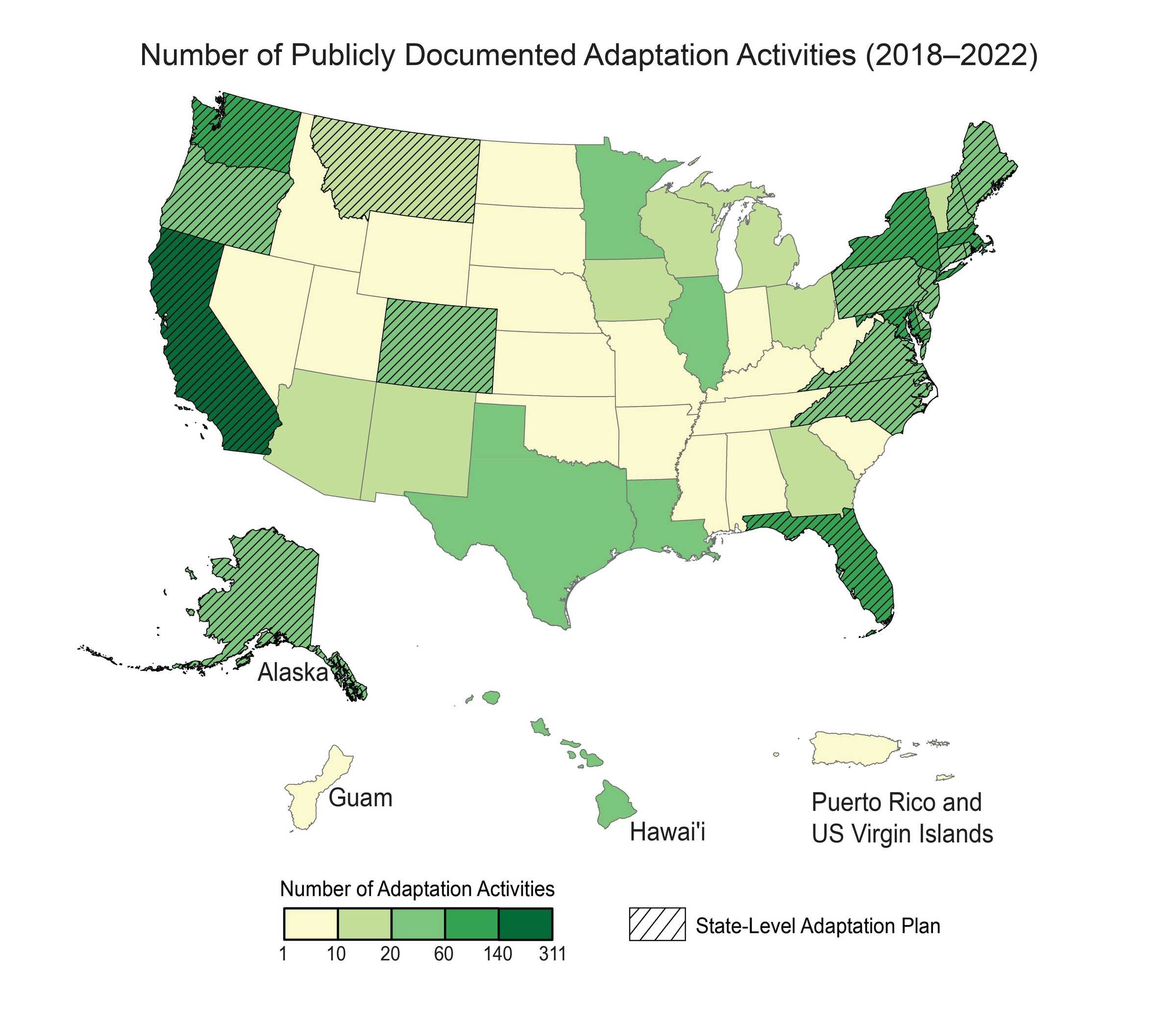NCA5’s message to Virginia
Written by Sophia Whitaker
On the morning of November 14, 2023, researchers and practitioners alike were gifted with the long awaited Fifth National Climate Assessment (NCA5), a government-mandated synopsis of climate change impacts and solutions in the United States. The report proclaims nothing short of an emergency that demands significant emissions cuts and greater preparedness efforts, while detailing the steps many have taken, and guiding decision-makers toward further progress.
NCA5 starts out hot off the burner establishing the theme to be carried out through the individual chapters - climate change is here and will continue to worsen unless we take our current baby steps and turn them into strides. Every region of the US is experiencing the consequences of a warming world, and these challenges are also compounding with issues that extend beyond the obvious. Factors such as pre-existing socioeconomic disparities are leaving Americans increasingly vulnerable to climate events, and it is up to us to choose our path moving forward. While many of us feel we do not have the power to steer the entire nation toward a more resilient future, the Virginia Climate Center (VCC) knows we all have the power to make a difference on a more local level here in the Commonwealth. Thankfully, NCA5 provides a wealth of information that is useful to understand Virginia’s climate risks and actions to take moving forward.
NCA5 designated regions. Source: NCA5
Hundreds of experts from across the country contributed to NCA5, proudly including one of VCC’s lead researchers Dr. Celso Ferreira, and partitioned the report into special topics and regions of the US. Virginia is grouped in with the Southeast and, while us here in the Commonwealth may not experience climate change the same as Miami, there are shared impacts and risks. Population dynamics throughout the Southeast have been rapidly changing as many are flocking from rural settings to urban and coastal cities. This means further urbanization threatening ecosystems that act like nature’s climate buffer and more humans exposed to the Southeast’s increasing weather disasters. The region’s issue with historically poor human health is expected to worsen with extreme heat, wildfires, and vector borne disease ergo stressing healthcare systems and access to health resources. Industries and infrastructure vital to modern society will face damage causing economic hardship, shortages, and job insecurity.
What sets NCA5 apart from many science-heavy climate reports is the special attention paid to discussing solutions and providing examples of actions already taken, making the task at hand less ominous and more actionable. Most states, including Virginia, have initiated strategies to mitigate future climate disturbances and many occur at a more micro level as the feasibility of such actions depend on various hyper local factors. Virginia itself has implemented the Virginia Clean Economy Act which aims to reduce emissions from the power sector and localities such as the City of Charlottesville have developed mitigation strategies in their climate action plans. However, the solutions presented by NCA5 for the Southeast region focus heavily on adaptation and resiliency measures rather than mitigation.
A common theme across the region is the occurrence of resilient cities yet vulnerable rural areas, leaving everyone vulnerable in the long run. To combat this, the report authors suggest directing more funds specifically to rural municipalities. Other strategies that can be applied to all environments include buyouts to move populations away from risky areas and the inclusion of nature-based infrastructure. Despite what many may think, climate resiliency and economic prosperity go hand-in-hand so long as we make intentional investments to prepare our workforce, address inequities, and advance technologies.


Virginia is no stranger to climate planning. Across the Commonwealth, local governments and organizations have been working hard to avoid the worst impacts of a changing climate as well as prepare for the inevitable ones to come. Though some of NCA5’s discussion points came as nothing new to many Virginians, let us use it as a source to guide us through the ominous work to come. Let it serve as a reminder to invest not only in Virginia’s bustling cities but also in its rural and frontline communities. The full NCA5 report contains an abundance of information relevant to anyone from the average concerned citizen to high-level decision makers. VCC also encourages everyone to check out the NCA5 Interactive Atlas to explore climate data, impacts, and stories.
Author
Sophia Whitaker
Sophia is Communications Manager for the Virginia Climate Center at George Mason University.


